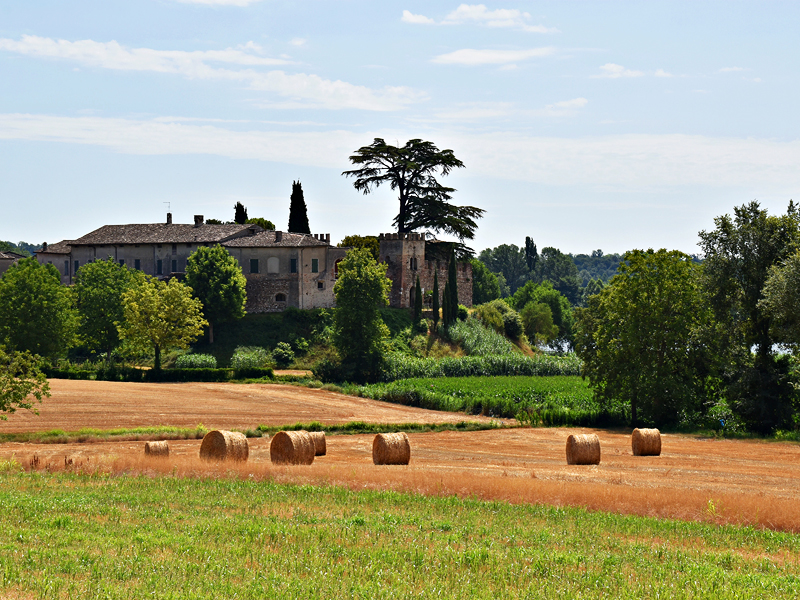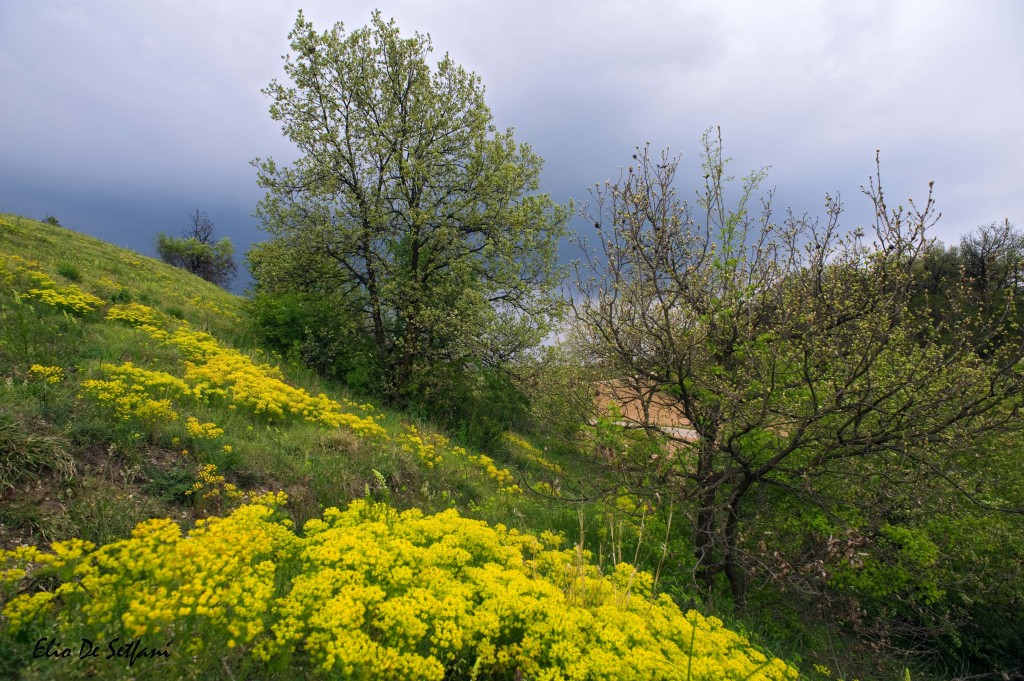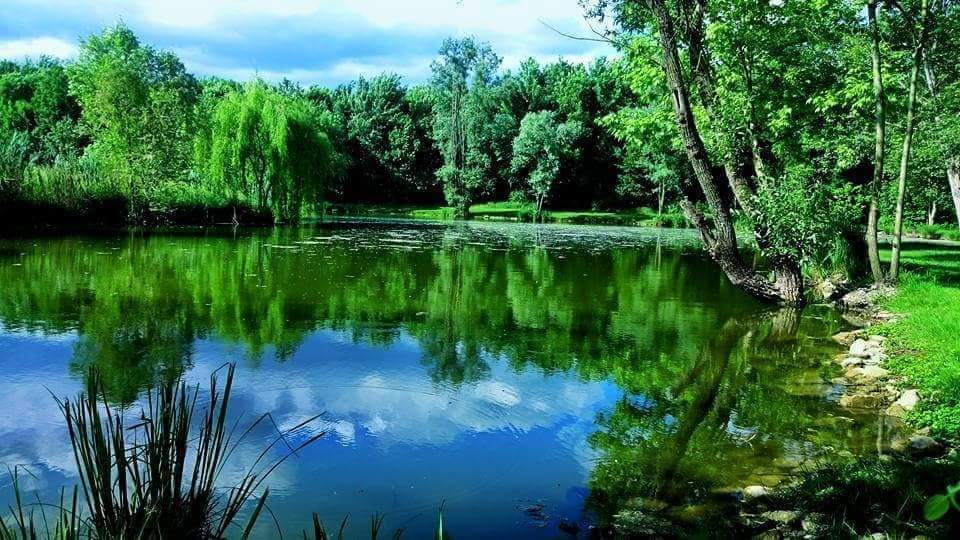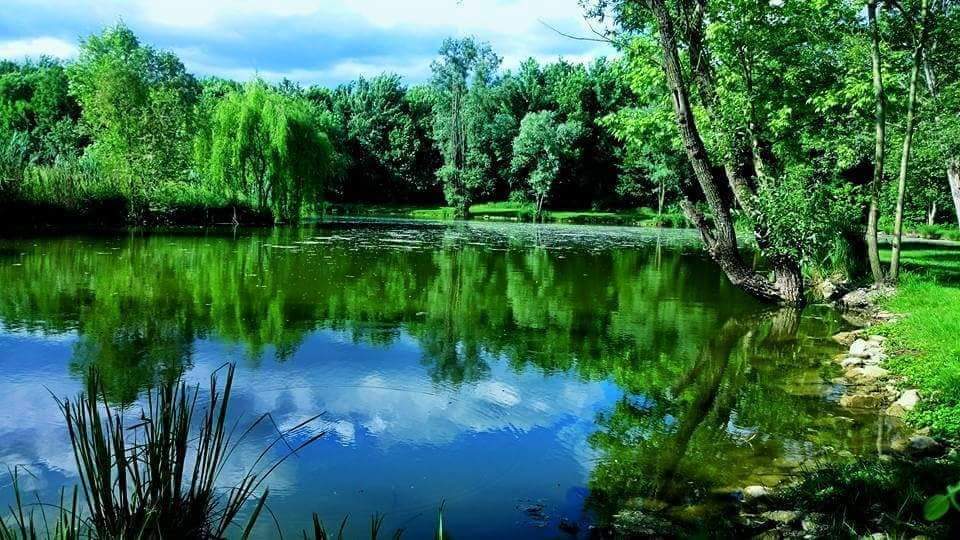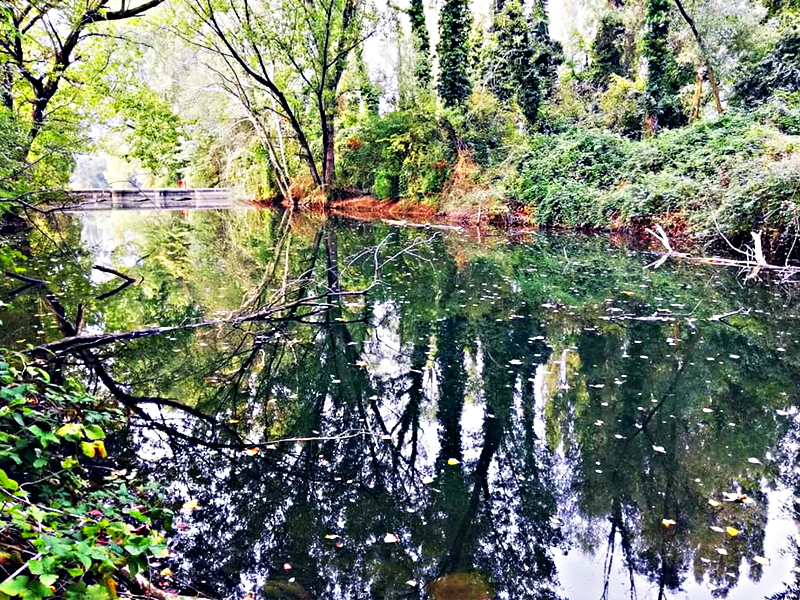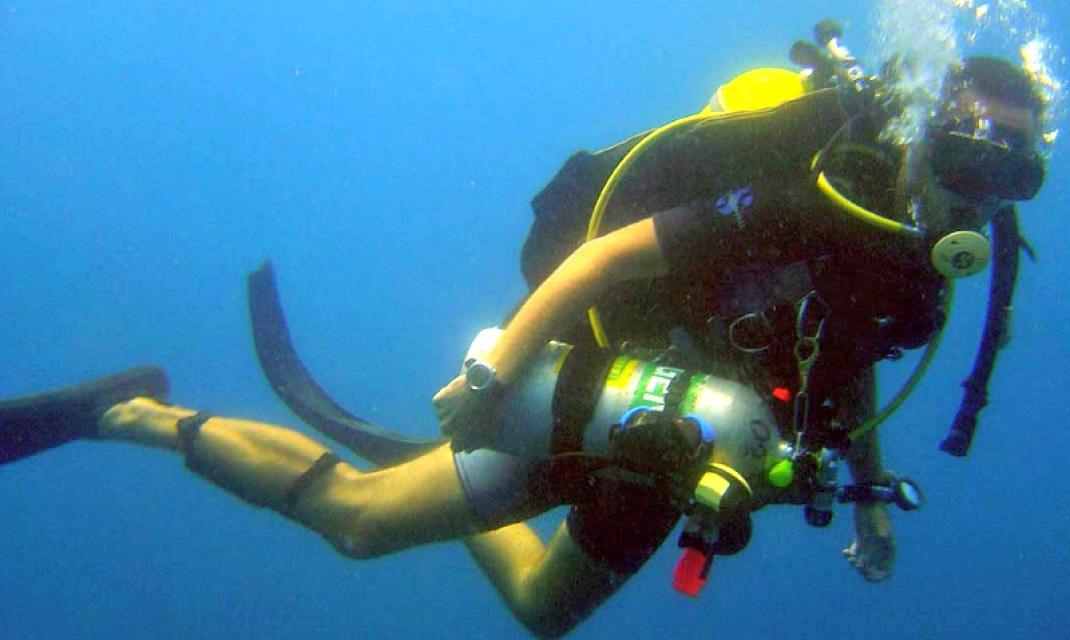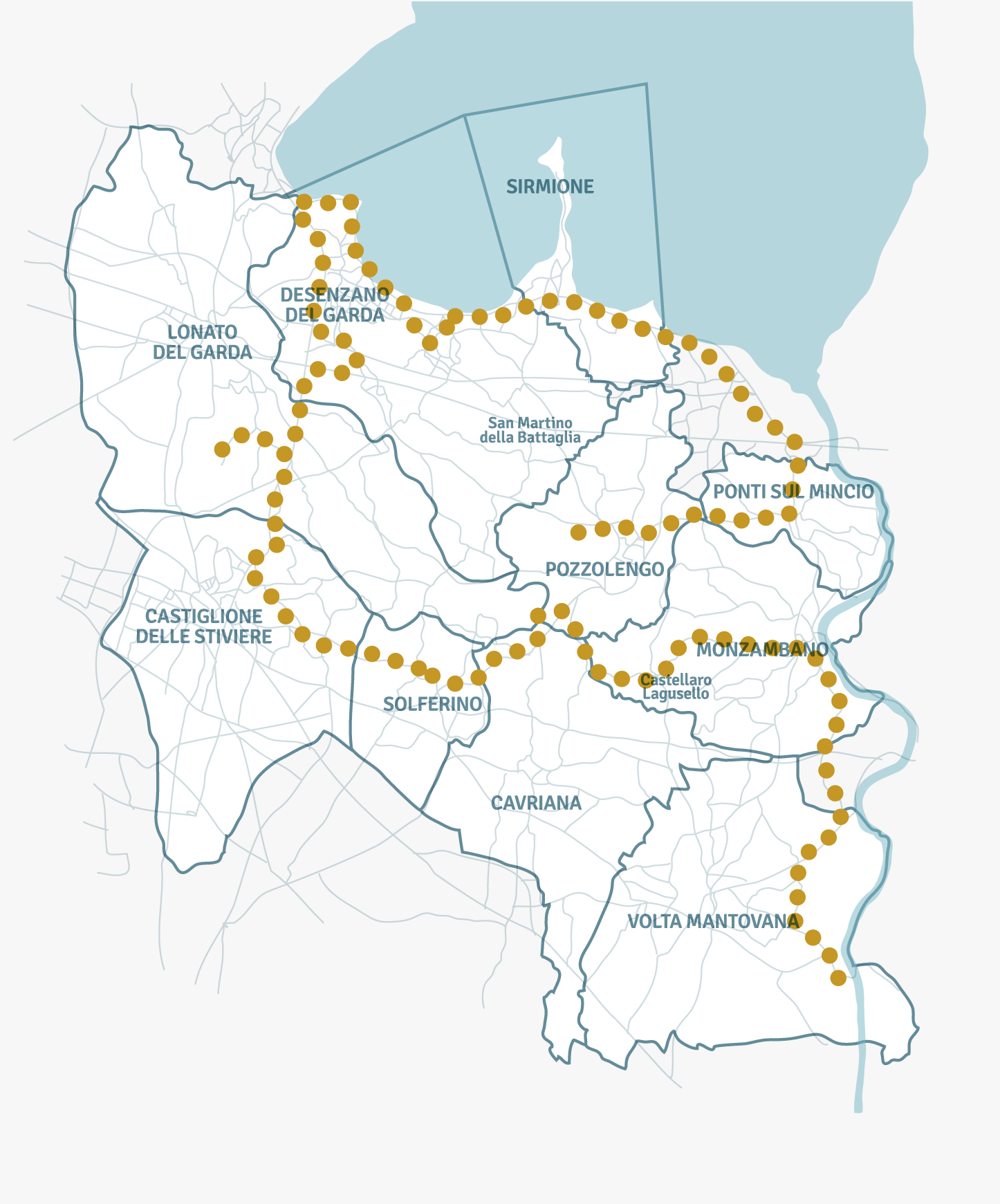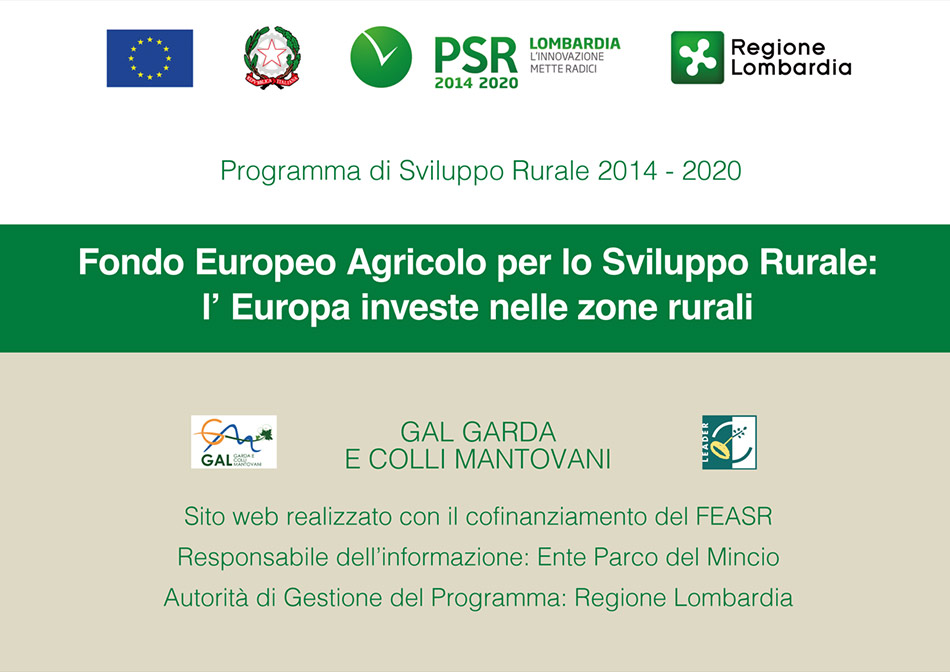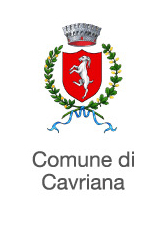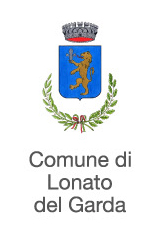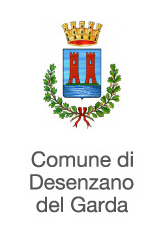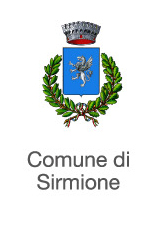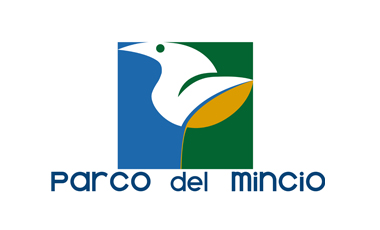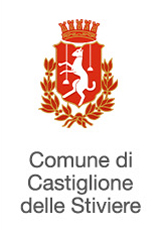![]()
1.3
the river and the park: places of biodiversity
The morainic amphitheater of Garda extends into the provinces of Mantua, Brescia and Verona. In moraine landscapes, hilly forms prevail, characterized by extremely variable landscapes. The Mincio river cuts perpendicularly to the morainic amphitheater and gives the landscape a particular imprint due to the millenary shaping action carried out by the course. The proximity to Lake Garda, mitigating the rigors of the Po Valley climate, has favored the establishment in the local flora of Mediterranean elements which have been added to the mountain ones, which remained in the area after the retreat of the glaciers. Hence the great botanical interest of spontaneously vegetation environments. Here you can find the true jewels of the moraine flora, due to their rarity and beauty, such as the pulsatilla (Pulsatilla montana), the spring cinquefoil (Potentilla tabernaemontani), the widows (Globularia punctata), the turnip and the Siberian bellflower (Campana rapunculus and C . sibirica), the greater lilioasphodel (Anthericum liliago), the wild carnation (Dianthsu sylvestris) and numerous orchids such as the pyramidal orchid (Anacamptis pyramidalis), the wood flower (Limodorum abortivum), the goat lily (Orchis morio), the the speckled orchid (Orchis tridentata), the spider flower (Ophrys sphecodes), the little birds in the mirror (Ophris bertolonii), the bee flower (Ophirs apifera), the very rare drone flower (Ophris fuciflora), the a butterfly (Orchis papilionacea), the cimicina orchid (Orchis coriophora) and the greater serapis (Serapias vomeracea).
The arid slopes of the Garda morainic hills host natural communities of xerophilous woods and meadows. The forest formations are characterized by the presence of Cerro in association with Roverella. In the dominant layer there are hornbeam, black locust and sporadically hackberry, in the dominated layer there are medlar, hazel, dogwood, field maple, privet, hawthorn and Sangionello. Of note, in the woods to the left of the road that leads from the town to Corte Casino, you can observe the largest population of Iris plum trees in the Mantua hills. In a deep gully that marks the edge of the woods, two orchids grow: the Listera major and the Common Platantera. In the lake and in the Torbierina the Nannufero dominates accompanied by Ninfea and Amphibian Polygon. Along the ditches that enter the lake or in the circumlacunal ditch rs, water buttercup and Scopina grass, a primulacea which is currently very rare, are found. The reed thickets surround a good part of the lake and the Torbierina, while the sedges are more present on the southern edge of the lake, where the narrow sedge and the shore sedge dominate. Between the sedge prairie and the lake there is a hygrophilous forest of black alder accompanied by white willow, black poplar and gray willow. There are 12 species of birds of community interest on the site, 3 of which are nesting.
There are 99 species of birds on the site, including sedentary, migratory and wintering birds. In particular, the Little Bittern, the Kingfisher, which regularly frequents the lake especially on the southern edge where the shrubby vegetation provides suitable perches from which to dive, and the Bee-eater, which nests in a wall overlooking the eastern side of the peat bog. There are two amphibian species of community interest attested: the Lataste frog, a very rare endemic species, and the crested newt. Among the 214 species of invertebrates recorded, the Stag Beetle, the Beetle linked to dead wood in oak forests and the Marsh Beetle are worth mentioning.

